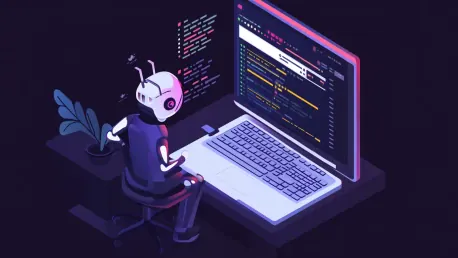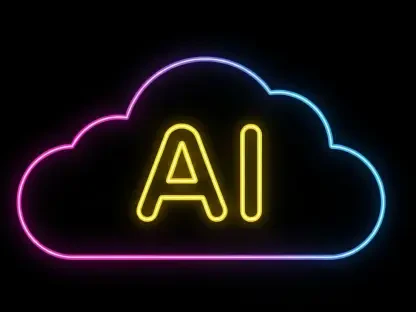Anand Naidu, our resident Development expert, is proficient in both frontend and backend and provides deep insights into various coding languages. Today, we will discuss the impact of AI-generated code on software development, challenges and improvements in AI-generated code, and ethical concerns.
How has the adoption of AI in coding changed the day-to-day operations of software developers?
The adoption of AI in coding has significantly streamlined various routine and repetitive tasks, allowing developers to focus more on complex problem-solving and creative aspects of software development. Tools like GitHub Copilot have integrated seamlessly into developers’ workflows, automating code suggestions, and offering quick fixes. This has certainly boosted productivity but also introduced new challenges, such as increased time spent on debugging and ensuring the security of AI-generated code.
Despite widespread AI adoption, why do some developers only “somewhat” trust AI-generated code?
While AI-generated code can perform well in quicker, standardized tasks, its reliability and accuracy can still fluctuate. This is due to limitations in context and understanding complex architectures, leading to mistrust among developers. Each line of code not only requires syntactic correctness but also needs to work within a larger system efficiently, which AI sometimes fails to address comprehensively. Hence, developers often need to review and adjust AI-generated code, fostering a cautious trust.
Microsoft reports that 150 million developers use GitHub Copilot. How significant is this for the industry?
This statistic is highly significant as it underscores the rapid and extensive adoption of AI tools in software development. It indicates a major shift in the industry towards using AI to enhance coding practices, illustrating both the high demand for productivity enhancement and the trust developers place in these tools. This adoption also drives AI development further, prompting continuous improvement and innovation in AI coding assistants.
What are your thoughts on Google’s claim that over a quarter of its new code is AI-generated?
Google’s claim reveals the impressive strides AI has made in becoming a key contributor to active software development. It demonstrates AI’s pivotal role in speeding up development cycles and tackling large-scale code generation. However, it also raises questions regarding the code’s maintainability and long-term reliability, as AI still grapples with understanding comprehensive project scopes and nuances that experienced engineers handle.
What are some of the primary issues developers face with AI-generated code?
Common issues include the increased time spent on debugging, handling security vulnerabilities, and the risk of code duplication leading to technical debt. Since AI works within a limited context, developers often find discrepancies in logic and structure. The AI’s tendency to produce verbose or inefficient code can multiply maintainability challenges, forcing developers to exert extra effort to align AI outputs with project requirements.
How do limitations in context affect the quality and maintainability of AI-generated code?
AI-generated code tends to lack a holistic understanding of the entire project or software architecture. When AI operates with restricted context windows, it cannot fully grasp dependencies, interactions, or long-term implications within the codebase, leading to potential errors and inefficient design choices. This limitation necessitates thorough review and refinement by human developers to ensure robustness and adherence to best practices.
What strategies are being implemented to improve the reliability and accuracy of AI-generated code?
Enhancing training data, employing smaller specialized models, and improving prompt engineering are some strategies in focus. Companies are also integrating automated testing and validation processes to scrutinize AI outputs, ensuring they meet security and performance standards. These measures collectively help minimize errors and enhance the practical utility of AI-generated code.
What role do specialized models and improved prompt engineering play in enhancing AI code generation?
Specialized models are tuned for specific tasks, offering more precise and reliable outputs tailored to particular coding requirements. Improved prompt engineering helps in providing clear and contextual instructions to AI, optimizing the code generation process. Together, these approaches refine the AI’s ability to produce high-quality, context-aware code that aligns closely with project needs.
What are the potential compliance issues associated with AI-generated code?
Compliance issues arise from uncertainties in code ownership and intellectual property rights, given that some AI tools claim ownership or retain IP for retraining. Additionally, protecting proprietary data and ensuring it is not inadvertently used to train external models is a significant concern. Organizations must establish clear guidelines and conduct regular audits to mitigate these risks and adhere to compliance standards.
Why is human oversight still necessary with AI-generated code?
Human oversight remains crucial due to the AI’s limitations in understanding context, making nuanced decisions, and ensuring ethical standards. Developers bring creative insight, problem-solving abilities, and accountability that AI lacks, ensuring that the code is not only technically sound but also fits within the broader project goals and user needs.
Can you discuss the potential of AI-driven systems to entirely handle coding tasks?
Although AI-driven systems have made significant progress in handling coding tasks, complete automation is not yet feasible. AI lacks comprehensive understanding, creativity, and ethical considerations that humans bring to software development. AI will continue to support and enhance the work of developers, but human involvement is critical for addressing complex challenges and ensuring high-quality outputs.
Do you have any advice for our readers?
My advice for readers is to embrace AI tools for their productivity benefits while maintaining a critical eye on the outputs. Regularly review and refine AI-generated code, prioritize learning improved prompt engineering techniques, and stay informed about advancements in AI coding assistants. Balancing AI’s strengths with human creativity and oversight will lead to the most effective and innovative results in software development.









